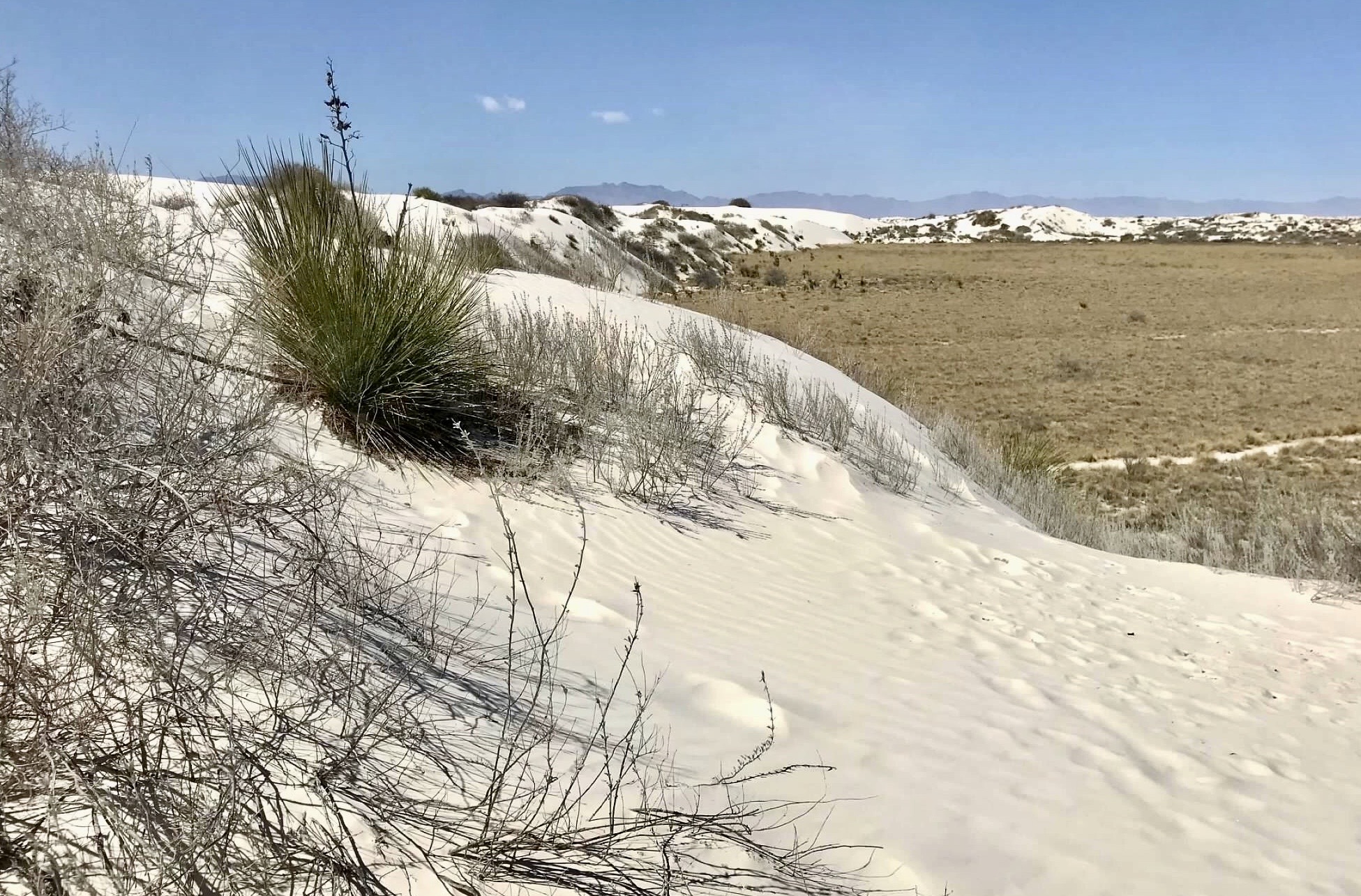
White Sands National Park is one of America’s newest national parks! Located near Alamogordo, New Mexico, it is completely surrounded by White Sands Missile Range and preserves the southern forty percent of the 275 square mile field of white gypsum sand dunes.

Plans to preserve the dunes began as early as 1898, but got more serious in the 1910s when U.S. Senator Albert Fall proposed several bills to create a park. Fall fell from grace as a result of the Tea Pot Dome scandal in 1923, but Alamogordo businessman Tom Charles and Senator Bronson Cutting convinced President Herbert Hoover to create a national monument in 1933. Charles became the new national monument’s first custodian. Between 1936 and 1938, the Works Projects Administration built the visitors center, ranger housing, and other adobe buildings. The buildings were designed by architect Lyle Bennett who also designed White Sands’ unique picnic tables, as well as the Painted Desert Inn at Petrified Forest National Park and many of the buildings at Bandelier National Monument.

The White Sands Missile Range was created in response to the Japanese Attack on Pearl Harbor. The first nuclear bomb created by the Manhattan Project was tested at the Trinity Site on the missile range in July 16, 1945. Occasionally the park must close for missile testing. The monument was elevated to a national park by President Donald Trump in 2019.

White Sands is Dog Friendly!
Dogs are welcomed in the dunes as long as they aren’t disruptive to wildlife and remain on a leash. Our dog, Liberty, loved exploring the soft, white sand. The gypsum sand is much cooler than other forms of sand, like that at Great Sand Dunes National Park, so dogs are less likely to burn their paws – but be sure to have plenty of water available for your furry friend. Liberty’s favorite activity in the park was hiking the short Dune Life Nature Trail.
Dune Life Nature Trail
The Dune Life Nature Trail starts about 2.5 miles from the visitors center. It is a one mile loop trail that begins in a desert scrub environment then climbs into the dunes. Trail signs feature Katie the Kit Fox, the trail’s mascot, who teaches hikers about life in the dunes. The trail can be a little difficult to find in places, so be sure to look for the blue trail markers. There is very little shade on this trail, so bring plenty of water and sunscreen!



Dune Drive
Driving the scenic road through the park is a unique experience. Dune Drive is 8 miles one way. The last three miles are unpaved, but the packed gypsum sand is suitable for all vehicles. The tall white dunes on either side of the road make the drive feel otherworldly. There are three nice picnic areas along Dune Drive with a total of 64 unique picnic tables.
Sand Sledding at White Sands
Sledding may be the most popular activity in the park. The National Park Service website has a great instructional video on sledding at White Sands that compares types of sleds. Unlike Great Sand Dunes, where a specialized wooden sled is necessary, plastic disk snow sleds work best in White Sands’ gypsum. We brought our own disk sleds for $4 each and bought a block of wax for $2 at the visitors center. Disk sleds are available at the visitors center for $20. Park guests who don’t want to haul their new sled back home, can trade it in for a can koozie. We enjoyed sledding on the dunes around one of the picnic areas; there are approximately eight of these parking lots at the end of the park road. We found our sleds worked best after we established a path down the dune and rode that same path repeatedly.



Headed to nearby Carlsbad Caverns? Check out our blog about exploring the Big Room!
Click here for more Land of Liberty Explorers!
Like this page? Please pin it on Pinterest or share it on Facebook!




